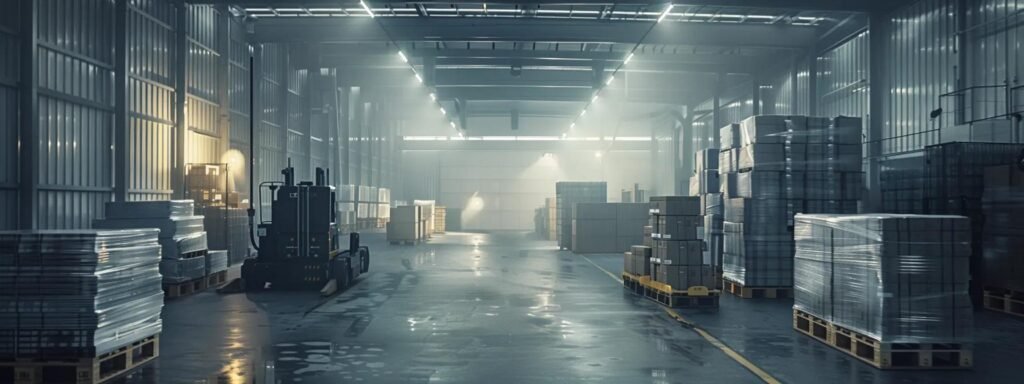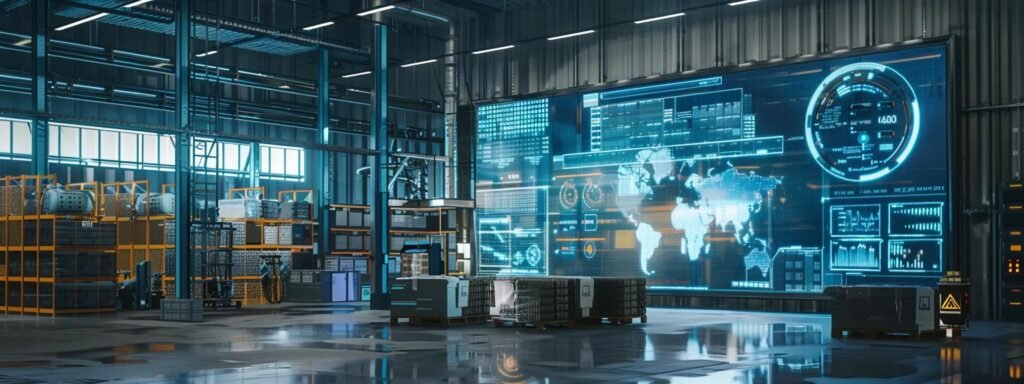
Comprehensive Guide to MHE Pallets: Types, Uses, and Selection Tips
In today’s competitive industrial and logistics landscape, material handling solutions are critical for efficient warehousing, distribution, and transportation. MHE (Material Handling Equipment) pallets support storage and movement of goods while impacting productivity, safety, and cost-effectiveness. From small distribution centers to large manufacturing plants, businesses require pallets that meet strict performance, durability, and sustainability standards. This guide explains what MHE pallets are, their essential functions, and how choosing the right type can optimize warehouse operations. It offers comprehensive insights into key features, maintenance practices, repair and recycling benefits, cost factors, and expert recommendations—all designed to help decision-makers boost productivity and achieve long-term savings.
What Are MHE Pallets and Why Are They Essential in Material Handling?
MHE pallets are standardized platforms used to consolidate, store, transport, and protect goods in warehouses and during logistics operations. They provide a flat surface for stacking products and support movement by forklifts, pallet trucks, or automated guided vehicles. By standardizing shipments, minimizing product damage, and enabling rapid loading and unloading, these pallets help improve inventory management and reduce costs. With proper selection and maintenance, businesses can extend service life and lower replacement expenses.
How Do MHE Pallets Support Warehouse and Logistics Operations?
By providing uniform load-bearing surfaces, MHE pallets simplify stacking and transportation. Their compatibility with forklifts and pallet jacks ensures smooth movement and maximizes storage density in racking systems. In logistics, durable and recyclable pallets contribute to predictable load distribution, improved spatial efficiency, and reduced manual handling risks, ultimately boosting worker safety and operational reliability.
What Are the Key Features of Different MHE Pallet Types?
MHE pallets are engineered with features addressing load capacity, material strength, design flexibility, and environmental sustainability. Wooden pallets, for example, offer strong load-carrying ability and ease of repair, while plastic pallets provide superior hygiene and recyclability. Metal pallets deliver extreme durability for heavy-duty or severe conditions. Choosing the right pallet means matching these features to industry requirements, operational standards, and long-term sustainability goals.
Which Types of MHE Pallets Are Available and What Are Their Benefits?
Several types of MHE pallets are available, each with distinct advantages depending on the application and environment. Evaluating these variations is essential for optimizing productivity and ensuring compliance with safety and environmental standards.

What Are the Advantages of Wooden MHE Pallets?
Wooden pallets are common due to their high load capacity, cost-effectiveness, and ease of repair. Wood absorbs shocks during transit, minimizing product damage, and can be quickly repaired onsite to extend its lifecycle. Though they may require pest control treatment and are less suitable for highly hygienic areas, their affordability and established quality standards make them popular in traditional logistics.
How Do Plastic MHE Pallets Compare in Durability and Sustainability?
Plastic pallets offer enhanced durability, resistance to moisture, and excellent hygiene properties. Impervious to water, pests, and chemicals, they are ideal for industries like pharmaceuticals and food processing. Although they require a higher initial investment, their longer lifespan and recyclability contribute to lower long-term costs and sustainable practices. Their lightweight design also aids in energy savings during transport and improves compatibility with automated systems.
When Are Metal MHE Pallets the Best Choice?
Metal pallets are best for applications demanding extreme durability, high weight capacity, and resistance to harsh environments. Made of high-grade steel or aluminum, they endure heavy loads, high temperatures, and chemical exposures without warping. Despite a higher upfront cost, their long lifespan, minimal maintenance, and recyclability make them ideal for industries handling bulky or industrial parts, ensuring reliable performance under rigorous conditions.
How Can Custom MHE Pallets Meet Unique Handling Needs?
Custom MHE pallets address specific industry requirements that standard pallets might not meet. They can be designed with tailored dimensions, special coatings, reinforced structures, RFID tagging for tracking, and modular components for flexible stacking. Such customization supports unique storage, transportation, and assembly needs, helping businesses optimize space usage, reduce handling errors, and maintain operational continuity even in complex logistics environments.
Unlocking Warehouse Efficiency with Versatile MHE Pallet Solutions
MHE pallet trucks and pallet jacks play key roles in moving goods within warehouses and distribution centers. Their design determines the speed and safety of material transfers, making them essential for overall operational efficiency.
What Are the Differences Between MHE Pallet Trucks and Pallet Jacks?
While both are used to move pallets, MHE pallet trucks and pallet jacks differ in structure and capacity. Pallet trucks are built with heavier frames and powerful motors—often electric or internal combustion—to handle larger loads over longer distances. In contrast, pallet jacks, which are usually manual or semi-automatic, are ideal for short-distance, confined space operations. Additional features like adjustable forks, ergonomic controls, and advanced safety systems help pallet trucks perform efficiently in busy warehouses.
How to Choose the Right MHE Pallet Truck for Your Warehouse?
Selecting the appropriate pallet truck involves assessing warehouse needs such as load capacity, travel distance, floor conditions, and operator ergonomics. Key features to compare include lift height, battery life, maneuverability, and compatibility with existing pallets. A warehouse with long aisles and heavy loads might opt for a high-capacity electric pallet truck, while facilities with confined spaces may choose manual pallet jacks. Consider maintenance ease, warranty terms, and supplier support to ensure the equipment fits both current and future growth plans.
What Maintenance Is Required for MHE Pallet Jacks and Trucks?
Regular maintenance is crucial to ensure the longevity and safe operation of pallet trucks and jacks. Routine protocols involve visual inspections, cleaning, lubrication, battery checks, and hydraulic evaluations. Operators should perform daily checks on fork integrity and tire condition, while adhering to manufacturer guidelines for servicing intervals. A proactive maintenance plan minimizes downtime and safety risks, ultimately supporting smooth warehouse operations.
What Are the Best Practices for Selecting and Using MHE Pallets?
Optimal use of MHE pallets depends on careful selection and proper operational practices. Adhering to best practices not only maximizes space and workflow efficiency but also ensures safety and durability within goods handling systems.

How to Assess Load Capacity and Size Requirements for MHE Pallets?
Evaluating load capacity and pallet size is fundamental. Businesses must measure both the static load (the weight of items stacked on a pallet) and the dynamic load (weight during movement). Consider storage conditions, whether goods are stored on racking systems or open floors, and industry safety regulations when choosing a pallet type. Performing these calculations with input from engineers or experienced consultants helps ensure that the chosen design meets daily operational needs and minimizes risks of damage.
Why Is Compliance With ISO Standards Important for MHE Pallets?
ISO standards ensure that MHE pallets meet internationally recognized criteria for quality and safety. Uniform dimensions, load capacities, and performance benchmarks allow for easy exchange between global partners and smooth integration into automated systems. Compliance minimizes risks of product damage and workplace accidents, while also serving as a strong marketing point for companies expanding internationally.
How Does Sustainability Influence MHE Pallet Choices?
Sustainability is a major factor in pallet selection. Companies must consider the entire lifecycle of a pallet—from raw material sourcing to end-of-life recycling or disposal. Materials that are recyclable or have a lower carbon footprint, like plastic and metal, can result in long-term cost savings and reduced environmental impact. Embracing sustainable practices not only supports environmental goals but also enhances brand reputation and can lead to reduced maintenance and waste costs.
How Can MHE Pallet Repair and Recycling Extend Pallet Lifespan?
Regular repair and recycling can significantly extend the lifecycle of MHE pallets while supporting sustainability objectives. Implementing routine repair protocols and establishing recycling programs minimizes waste and optimizes overall equipment performance.
What Are Common Repair Techniques for Damaged MHE Pallets?
Common repair methods include replacing broken boards, reinforcing weak joints, sanding rough surfaces, and applying protective coatings. Technicians may use heat treatments or chemical sealants to strengthen components. Regular inspections help detect damage early so that repairs can be made instead of discarding the pallet, reducing costs and waste while maintaining structural integrity.
How Does Pallet Recycling Support Environmental Goals?
Recycling pallets reduces waste and lowers demand for new raw materials. Reused wood decreases deforestation and conserves energy, while recycling processes for plastic and metal pallets reduce landfill usage. A robust recycling program not only improves a company’s green credentials but also often results in long-term cost savings. This circular economy approach supports both environmental targets and operational efficiency.
Where to Find Professional MHE Pallet Repair and Recycling Services?
Specialized service providers offer comprehensive repair and recycling solutions for MHE pallets, including on-site repairs, maintenance contracts, and tailored recycling programs. Consulting industry directories, trade associations, and logistics expos can help identify reputable providers with proven track records for extending equipment lifespan and meeting environmental standards.
What Are the Cost Factors and Pricing Trends for MHE Pallets and Equipment?
The pricing of MHE pallets and related equipment depends on material type, construction quality, customization, maintenance needs, and market conditions. Understanding these variables is key to balancing upfront costs with long-term operational efficiency.

How Does Material Type Affect MHE Pallet Pricing?
Material choice is a major price determinant. Wooden pallets tend to be less expensive initially but may incur higher maintenance costs. Plastic pallets, offering longer lifespan and lower maintenance needs, come at a higher upfront cost, while metal pallets command the highest price due to superior durability and specialized production. The accompanying comparison table summarizes these differences:
| Material | Approximate Price Range | Durability (Years) | Maintenance Needs | Sustainability Factor |
|---|---|---|---|---|
| Wood | Low | 2–5 | High | Moderate |
| Plastic | Medium | 8–15 | Low | High (Recyclable) |
| Metal | High | 10+ | Low | High (Recyclable) |
What Are the Benefits of Buying Versus Leasing MHE Pallet Trucks and Jacks?
Buying equipment offers asset ownership, customization, and potential long-term savings if usage is high. Purchased machines, when well maintained, can yield better ROI in steady operations. Leasing, however, provides lower upfront costs, regular technological updates, and reduced maintenance responsibilities, making it attractive for businesses with fluctuating needs or those seeking the latest innovations.
How Do Industry Experts Recommend Optimizing Material Handling With MHE Pallets?
Experts believe that effective material handling goes beyond selecting the right pallet type—it requires integrating these pallets into a comprehensive operational strategy. Systematic approaches to selection, maintenance, and workflow management can greatly improve both efficiency and safety.
What Are Proven Strategies to Improve Warehouse Efficiency Using MHE Pallets?
Strategies include standardizing pallet sizes, utilizing automated handling systems, and training staff on proper equipment use. Integrating technologies like automated guided vehicles (AGVs) and electric pallet trucks speeds up movement and reduces downtime. Additionally, employing data analytics to monitor pallet utilization and condition helps refine purchasing decisions and maintenance schedules. Lean warehousing—minimizing excess inventory and optimizing floor layouts—further enhances throughput and reduces handling times.
How Can Expert Consultation Help in Choosing the Right MHE Pallet Solutions?
Consulting industry experts provides tailored insights based on facility audits, technical evaluations, and operational data. Experts can recommend optimal pallet configurations, identify bottlenecks, and offer solutions that meet safety and sustainability regulations. Their advice helps businesses minimize operational costs while maximizing efficiency and scalability.
Frequently Asked Questions
Q: What exactly are MHE pallets and why do they matter? A: MHE pallets are essential platforms used to secure and transport goods in warehousing and logistics. They standardize loading processes, improve transport efficiency, and enhance safety through consistent load-bearing dimensions.
Q: How do I determine which palletmaterial is best for my operation? A: The ideal material depends on load capacity needs, environmental conditions, and maintenance expectations. Wooden pallets are cost-effective and repairable; plastic pallets offer longevity and hygiene; metal pallets provide superior durability for heavy-duty applications.
Q: Can I repair an MHE palletinstead of buying a new one? A: Yes, many pallets can be repaired by replacing broken boards or reinforcing joints. Regular maintenance and repair extend a pallet’s service life and reduce waste.
Q: What role do ISO standards play in the selection of MHE pallets? A: ISO standards ensure that pallets meet quality, load, and performance benchmarks, supporting global supply chain integration and reducing risks of damage and accidents.
Q: Is leasing MHE pallettrucks a viable option compared to buying them outright? A: Leasing offers lower initial costs and frequent updates, while buying may be more cost-effective over time if the equipment is used consistently and well maintained.
Q: How does sustainabilityinfluence palletchoice? A: Sustainable pallets, such as those made of plastic or metal, offer recyclability and reduced environmental impact, aligning with corporate social responsibility goals and reducing long-term maintenance and replacement costs.
Q: What maintenance practices are recommended for MHE pallettrucks and jacks? A: Regular inspections, proper lubrication, battery/hydraulic checks, and adherence to manufacturer servicing schedules are crucial for safe, reliable operation and longevity of the equipment.
Final Thoughts
MHE pallets are a cornerstone of efficient material handling. Selecting the appropriate type—whether wood, plastic, or metal—combined with strategic maintenance, repair, and recycling practices, can significantly enhance productivity, safety, and sustainability. By investing in optimized pallet systems and integrating them into a comprehensive operational strategy, companies can achieve improved distribution efficiency and long-term cost savings while meeting the evolving demands of modern supply chains.
